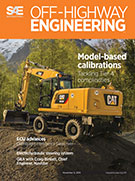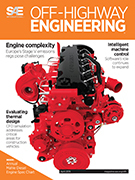Magazine

SAE Off-Highway Engineering 2012-07-05
2012-07-05
After diesel A look at some offshoots-hybrids, HCCI, and alternative fuels-to the ever-popular diesel engine in the off-highway industry. Software gains (hydraulic) power Development processes are being revised as software becomes a centerpiece of electrohydraulic designs. Virtual sensing gets real As emissions regulations get more strict, emissions measurement must get more precise for onboard diagnostics, engine control, and model-based controller design.













